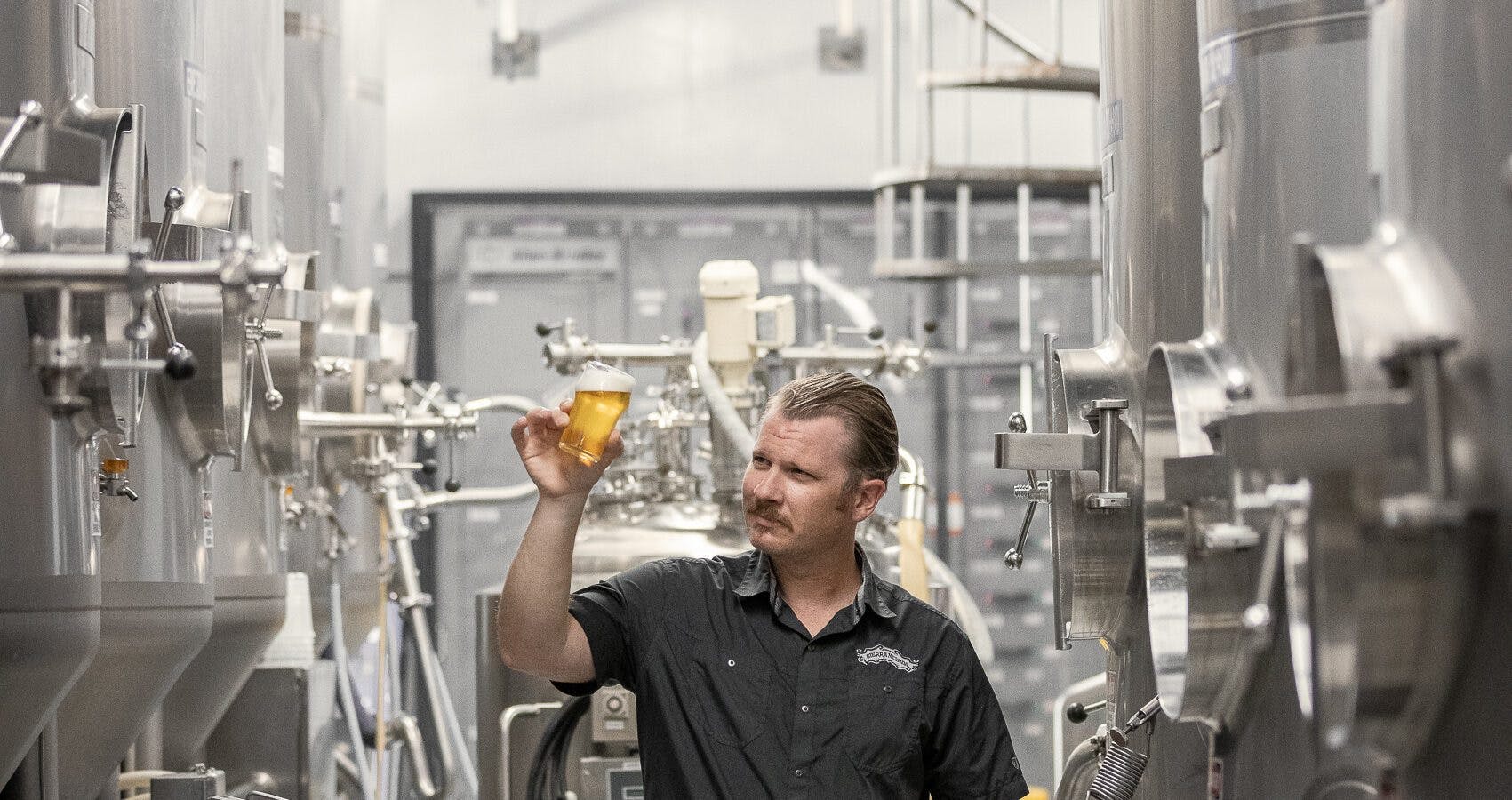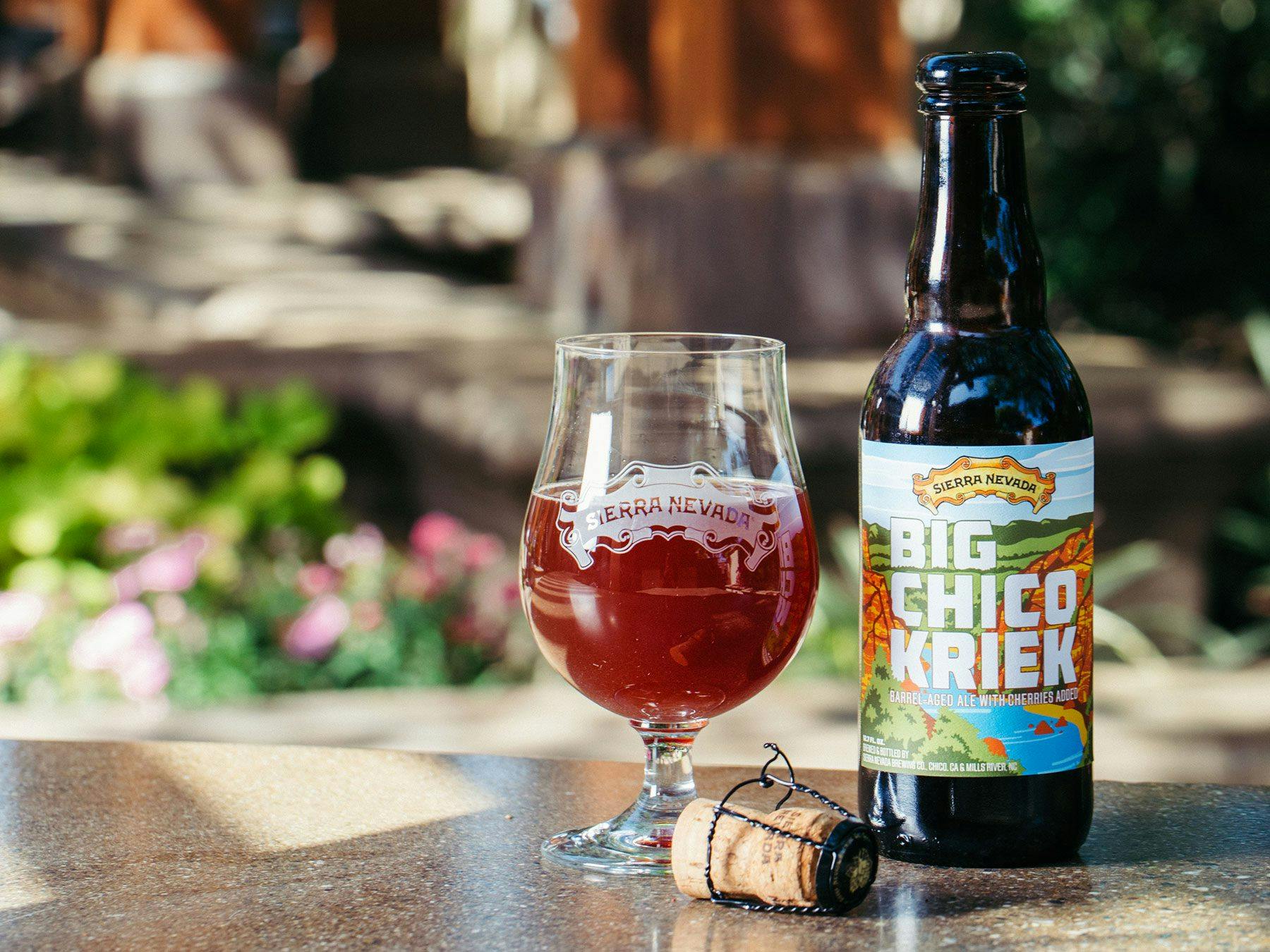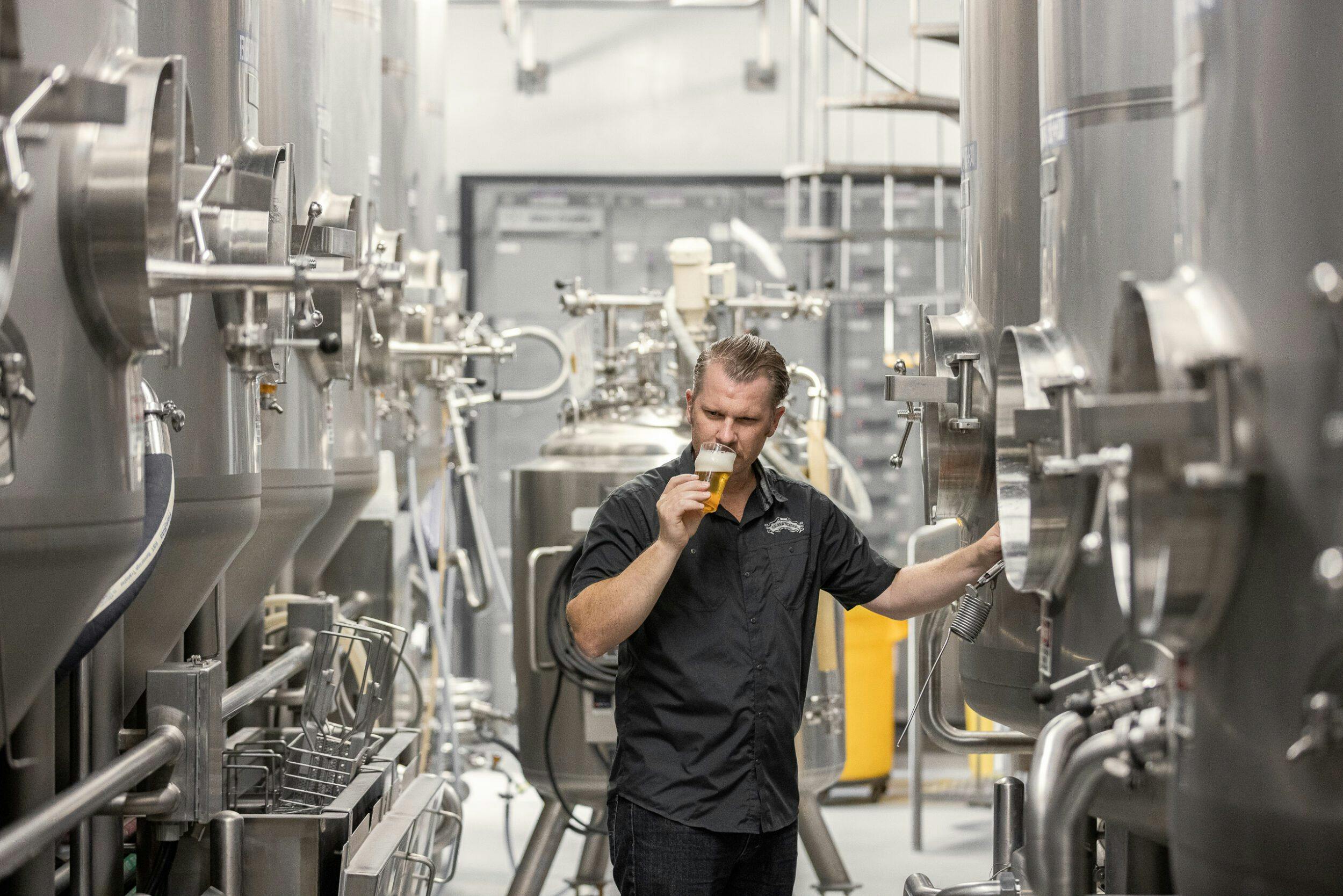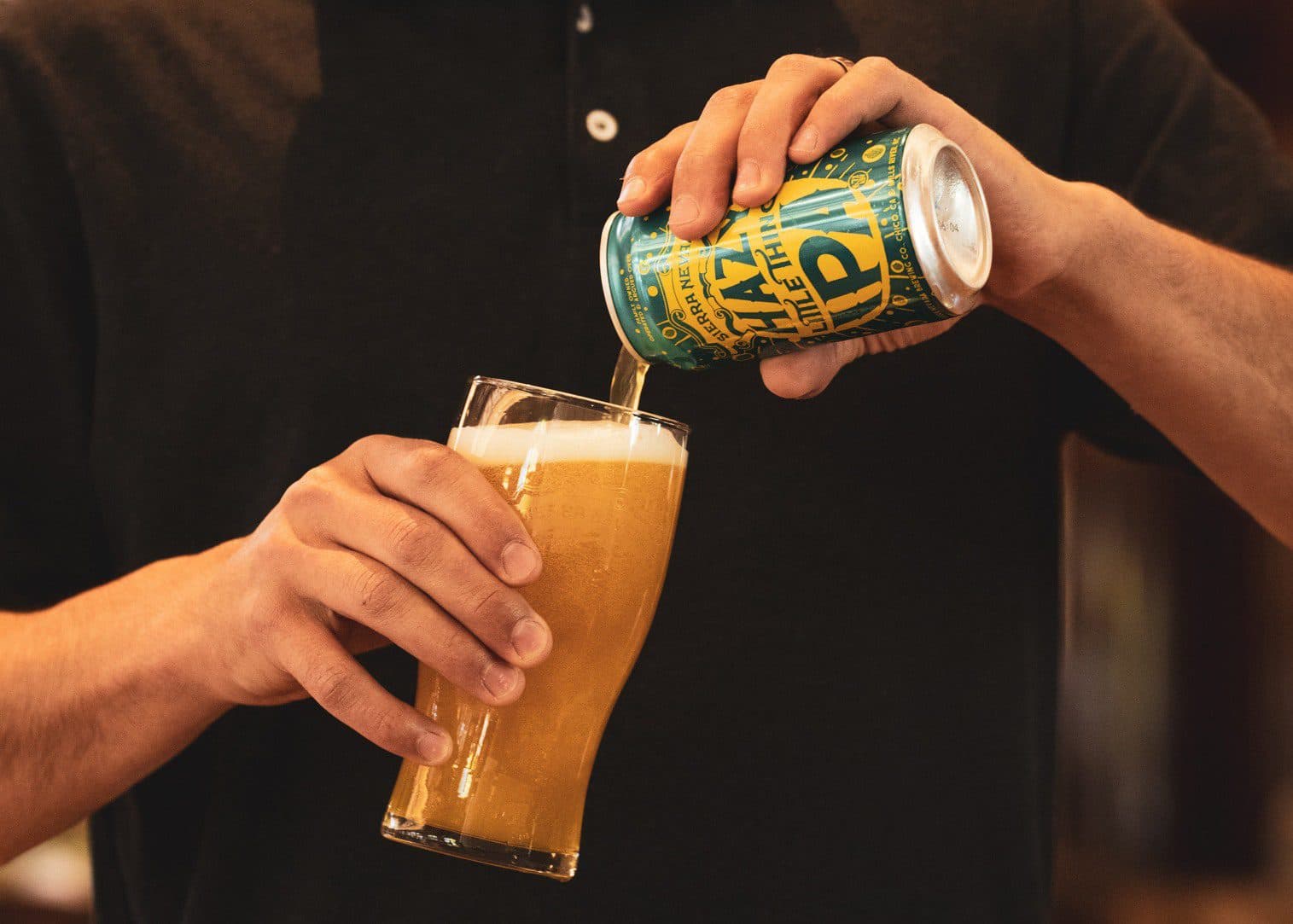
Ethanol
Ethanol (or ethyl alcohol), is the warming component of adult drinks that makes them alcoholic. Some beers are more alcoholic than others, of course. Take the eisbock lagers from Germany, in which the final stage is to start to freeze the beer. The first thing to emerge is ice (eis) in the form of purest water, leaving behind a solution that is far more concentrated in alcohol.
Some of the strongest beers are brewed by Trappist monks. In their portfolio the lowest alcohol levels are in a product style called Enkel, which means one, or single (compared with Dubbel, Tripel and Quadrupel). Abbey Beers, if you recall, follow Trappist traditions but cannot bear the same name.
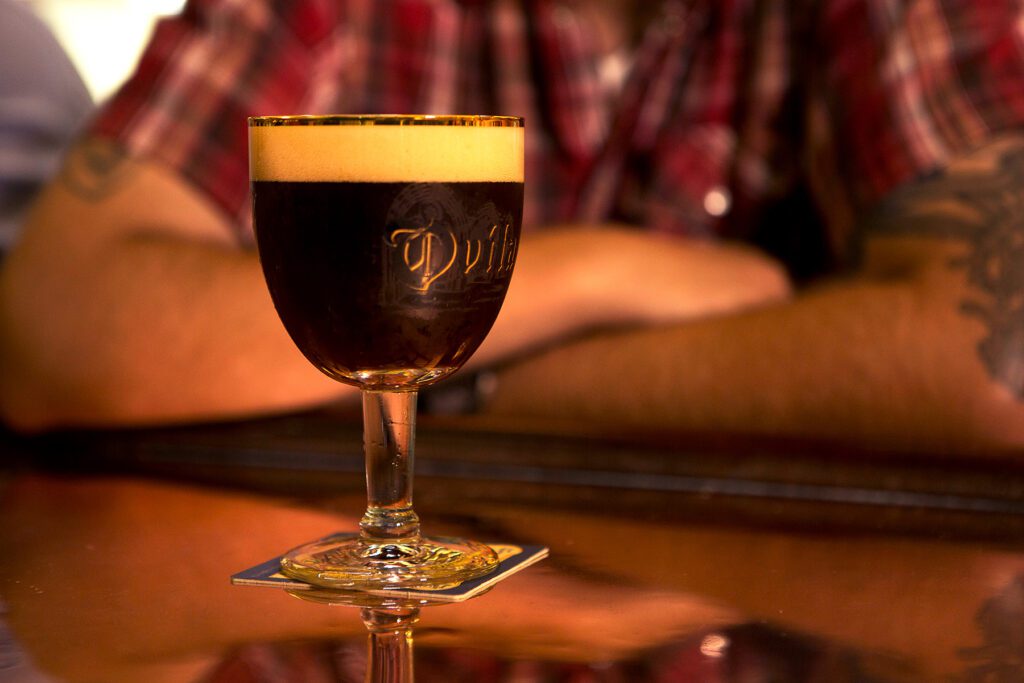
Enzymes
The ethanol is, of course, produced by yeast, which employs a series of reactions that convert sugar into alcohol and carbon dioxide. Each of these stages is catalyzed by a different enzyme. These are proteins that enable the reactions to take place more rapidly.
Enzymes are at the heart of the entire journey from grain to beer. Thus, they play a critical role during malting in breaking down the storage materials that are in the barley that renders the starch in a form that can be broken down by more enzymes in the mash to produce fermentable sugars. That food reserve in the barley kernel is called the (starchy) endosperm. Its role in a barley grain (seed) that is going to grow into a new barley plant is to feed the baby plant, the embryo.
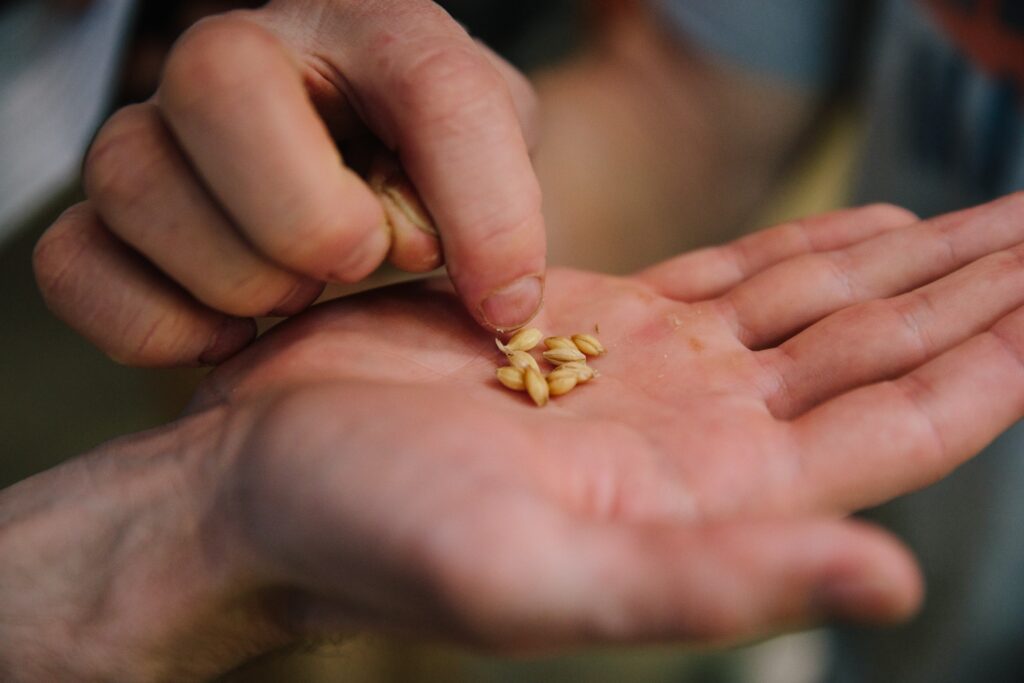
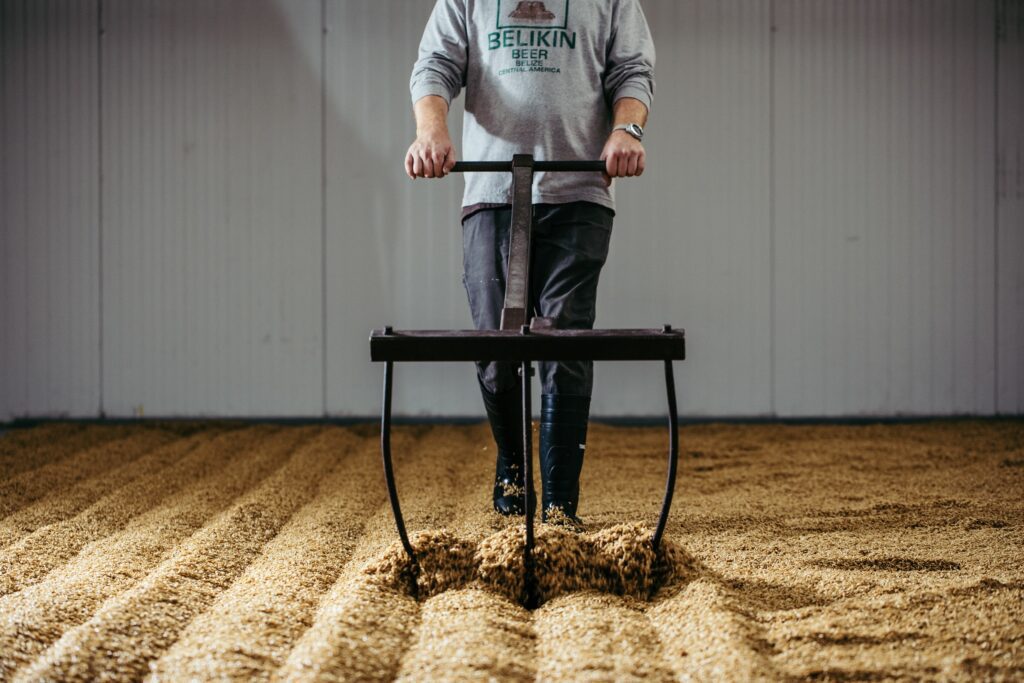
Extract
We know how well the enzymes have done their job in the mash by measuring the strength of the wort in terms of a value called extract.
Brewers are very skilled at collecting this extract in lauter tuns. The last worts that contain the lowest levels of sugar and other materials usually head off to the wastewater treatment plant — it is part of the effluent.
The extent to which brewers can convert and collect all the potential extract from the raw materials into wort entering the kettle is referred to as brewhouse efficiency. It is both economically and environmentally responsible to avoid waste and is all part of the strategy of a conscientious brewing company such as Sierra Nevada.

Experimenting With Ecokegs
Some brewers are experimenting with a novel form of package called ecokegs. These plastic kegs, which are used just one time, are lighter and therefore less expensive to travel out for sale than are aluminum or stainless-steel kegs. There is no reverse trip because they are not recovered, thereby saving on cleaning costs. They also contain a liner which scavenges oxygen, the big enemy of beer that cause staling.
In the brewery there is an instrument that for a quarter of a century has been used to study the staling of beer. The technique is called electron paramagnetic resonance spectroscopy, or EPR.
The reality is that it only tells us about a part of the complex story that is flavor instability. For example, it tells us nothing about the esters, the substances made by yeast that give fruity aromas like banana and pear to beers like Sierra Nevada Kellerweis. Their level can change as beers age.
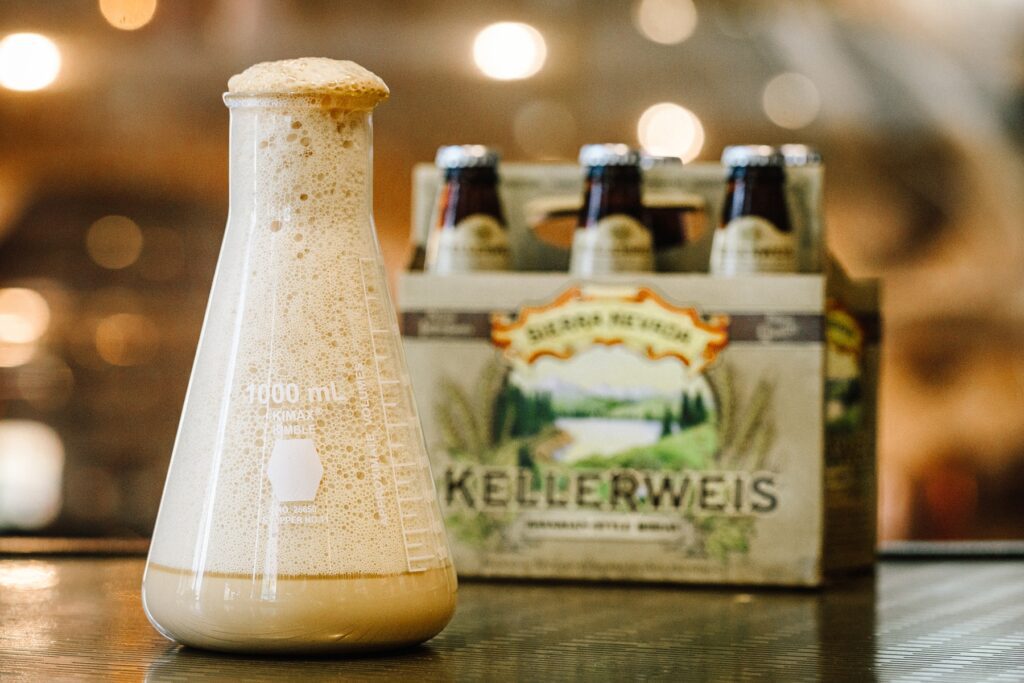
One of the brewer’s best friends when it comes to flavor stability is the yeast. It loves to gobble up both oxygen and many of the substances that cause beer to stale. It must be healthy yeast, though, with healthy membranes. These are the films that surround the cell and all the key structures that are inside the yeast cell. A key component of the membranes is a sterol; in yeast it is not cholesterol, but rather ergosterol.
– Charlie Bamforth
